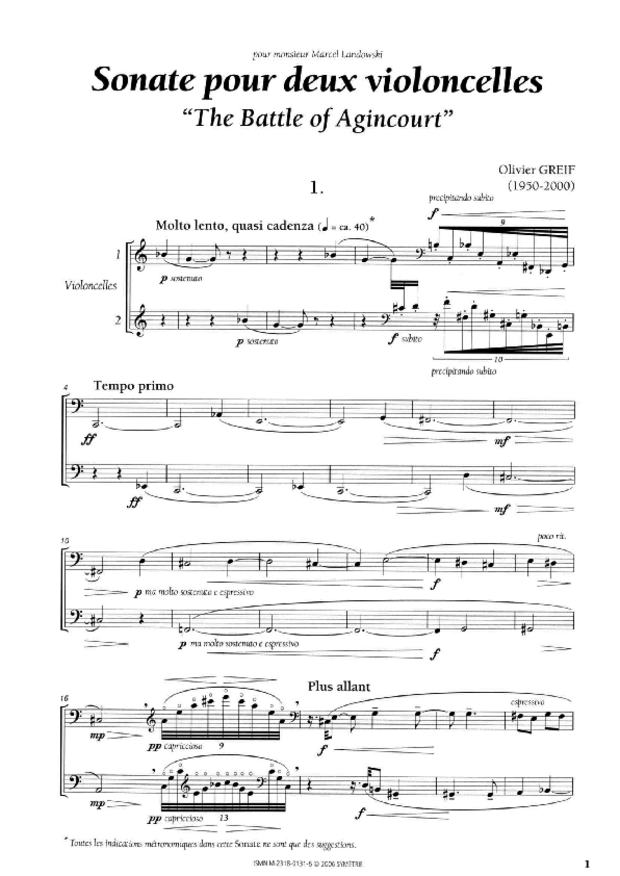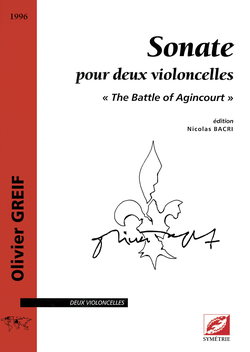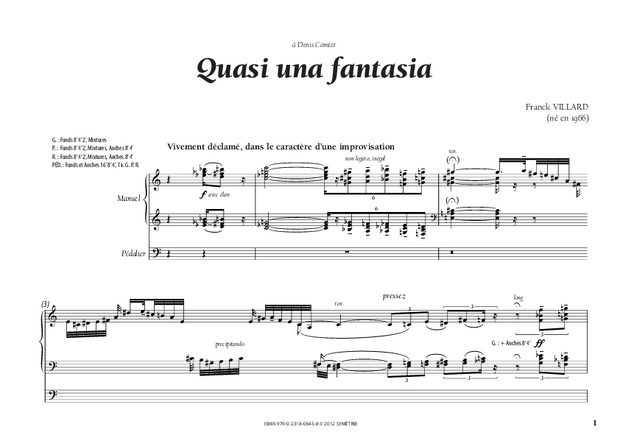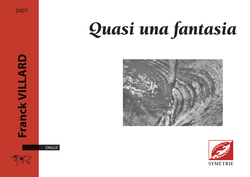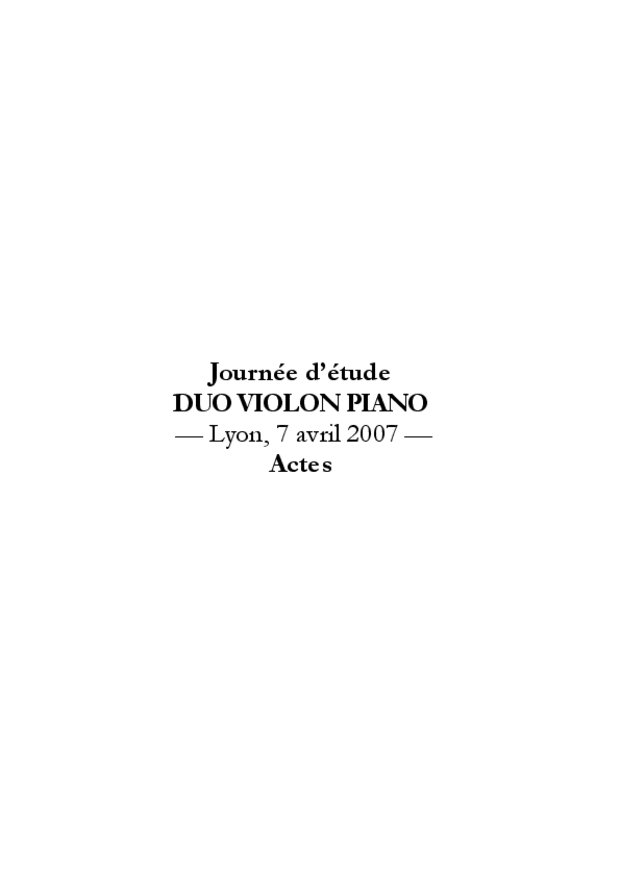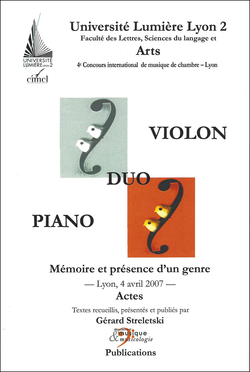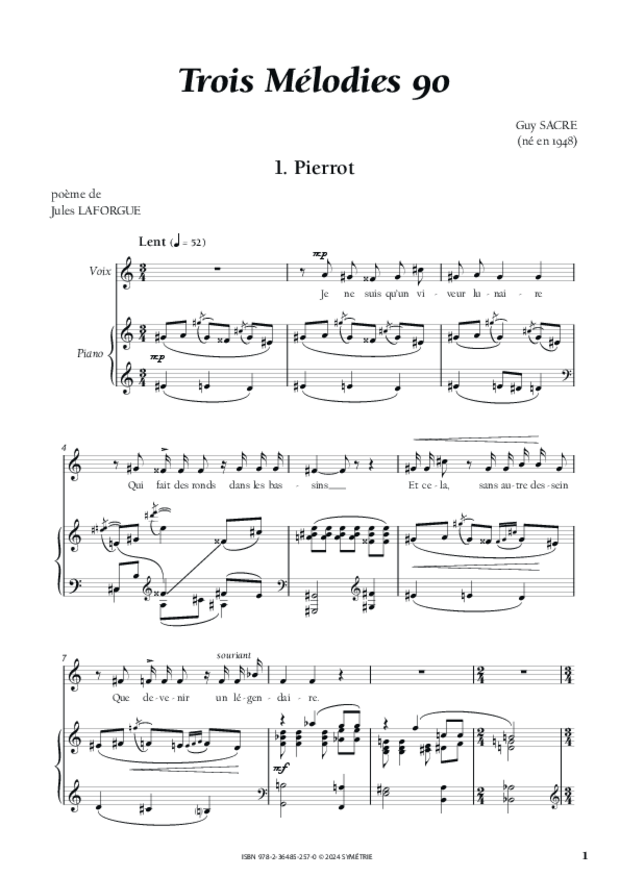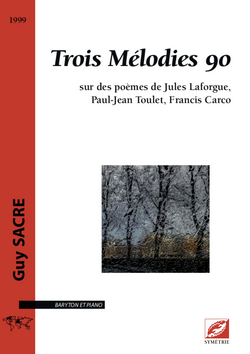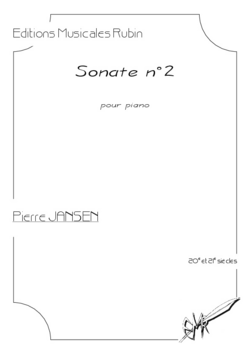The reference to plastic arts in the title of this work can be understood on two different levels: the idea of light and soft shaded colours, so often characteristic of the pastel technique, and with which the timbres of the instruments enable this analogy; the fact that the pastel, especially in the 18th century, was often used by portraitists (Quentin de la Tour, etc.).
This piece was written to the memory of René Leibowitz, a great exponent of contemporary music in France in the last century (and of whom I was a student). The notes corresponding to the letters forming his name – and henceforth the intervals – form the matrix of the piece, an evocation more than a portrait strictly speaking.
Pastel is a piece in three parts linked together: the first one, rather linear, plays on the relations between intervals and the mixture of timbres; the second focuses on the search of rarer tones, calling sometimes for new playing techniques; the last part imperturbably develops a rhythmical articulation on 5 beats.
Jean-Marie Morel
(translation Philippe Do)
Panorama de presse
Il s’agit d’une musique délicate qu’on espère promise à une grande diffusion.
Daniel Blackstone, L’Éducation musicale
Nomenclature
1 violon, 1 clarinette, 1 violoncelle, 1 piano
All available forms
-
sheet music pour violon, clarinette, violoncelle et piano
-
conducteur et matériel
1 violon, 1 clarinette, 1 violoncelle, 1 piano · 21 x 29.7 cm · stapled booklet · 28 pages · ISMN 979-0-2318-0614-4
Publisher : Symétrie
Price : €60.00
-
-
sheet music pour pour violon, clarinette, violoncelle et piano
-
conducteur
1 violon, 1 clarinette, 1 violoncelle, 1 piano · 9 min · 21 x 29.7 cm · stapled booklet · 28 pages · ISMN 979-0-2318-0613-7
Publisher : Symétrie
Price : €32.00
-
